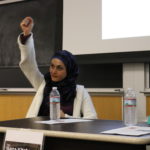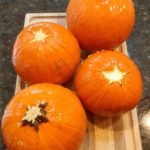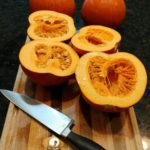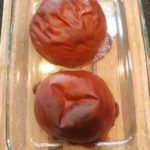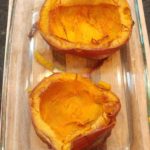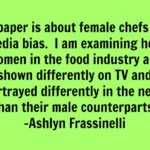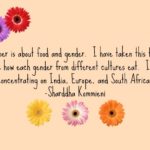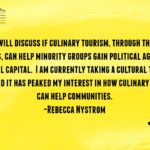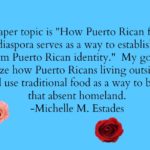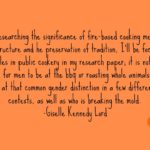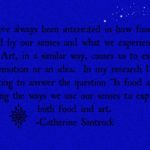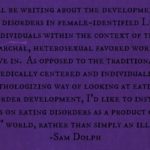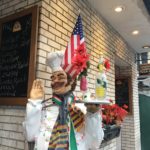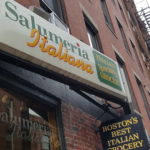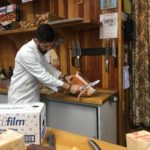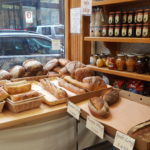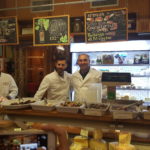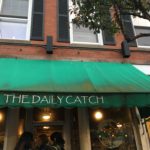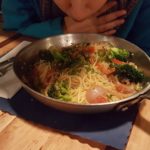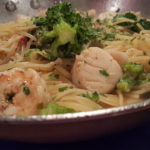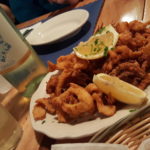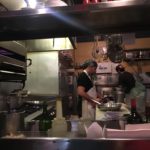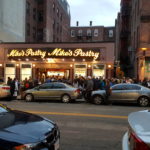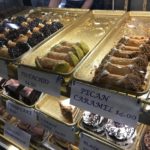The Oyster Revival
Filmmaker and Gastronomy student Allison Keir shares her new film: The Oyster Revival

Over the last century, coastlines throughout New England and across the globe endured dramatic transformations. The foundations of mankind slowly overtook the ecological bedrock—a massive expanse of oyster beds that once harbored a bounty of creatures. In the last 100 years, atmospheric carbon dioxide levels have skyrocketed, acidifying the oceans. Deteriorating municipal infrastructures, agricultural and industrial runoff, continue to disrupt nature’s balance. Powerful storms, now without the underwater obstacles of oyster beds to temper them, are devastating our seashores. Some believe these underwater environs are beyond repair.
But there may be a solution to aid the problem, right within the hands of nature. A single oyster can filter up to 50 gallons of water a day—an entire reef? Millions. The presence of these reefs, attract multitudes of other creatures that feed larger predators, building populations, and improving our fisheries. Oysters are the gills of our estuaries, and the scaffolding that supports coastal biodiversity. Their return might stifle ecological devastation worldwide.

The Oyster Revival is a story about revitalizing a tenuous relationship between man and mollusk, and the efforts being made to restore ecological balance to our coastlines. The documentary and transmedia campaign will explore the important role oysters play in maintaining a healthy ocean environment, and the various groups of people around the world advocating for their efficacy.
https://www.youtube.com/watch?v=LHtRl9k_1T4&feature=youtu.be
Alumni Spotlight: Mike Kostyo
 During my time in the gastronomy program, people would often ask a question that I’m sure is familiar to many current students – “What are you going to do with that degree?” (Or they would think I said ‘astronomy’ and look me up and down skeptically.) At the time I wasn’t sure what I was going to do when I finished. After earning my undergraduate journalism degree I worked on political campaigns and I entered the gastronomy program thinking I would focus on food policy. I thought I could work for a food-related government agency or non-profit when I graduated.
During my time in the gastronomy program, people would often ask a question that I’m sure is familiar to many current students – “What are you going to do with that degree?” (Or they would think I said ‘astronomy’ and look me up and down skeptically.) At the time I wasn’t sure what I was going to do when I finished. After earning my undergraduate journalism degree I worked on political campaigns and I entered the gastronomy program thinking I would focus on food policy. I thought I could work for a food-related government agency or non-profit when I graduated.

Studying food can take you down a rabbit hole, however, and soon I was researching the final meal choices of death row inmates for ML 701. I took Professor Mendlinger’s course on cultural tourism asset development and followed it up with his class that ends with a trip to Tanzania, where we tried to understand if the food markets and banana plantations would draw tourists who were typically only there on safari. I took the culinary arts, baking arts, artisan cheese, and wine certificate courses and made (and ate) an insane amount of food. Studying culture through food was fun. And it was delicious.
But again, what was I going to do with the degree?
After I graduated from the program in 2012 I moved back home to Chicago, which I discovered is the country’s center of food market research. I eventually accepted a position at Datassential, a company that began with a massive menu database which allowed analysts to understand the American menu – which ingredients were growing, which trends were slowing, etc. Today the company has grown to include a wide array of food and trend-related research capabilities, from reports on sandwiches to chef surveys to consumer focus groups. As the senior publications manager at the company, I oversee our seven TrendSpotting Reports, a series of publications that combine real-world trend research with market research from consumers, chefs, and other decision-makers.

Whether it’s a gastronomy research paper or a food industry trend report, good data is the foundation. Too often food trends are “identified” without any numbers to back them up – they are mostly opinions based on anecdotal evidence. At Datassential we have a huge range of tools at our disposal to inform and back up our findings. We don’t say bacon jam is trending because we saw it at our local coffee shop last week, we say it’s trending because it grew 569% on U.S. menus over the past four years. We don’t just say that Hawaiian poke is cool right now, we dive deep into what consumers think about it – over 1/3 say they are likely to try it at a restaurant.
Working in this industry challenges a lot of assumptions we often have about the U.S. food scene. If you live in an urban area with a lot of access to unique cuisines and ingredients, or if you are a food-loving student in a food-focused graduate program, you may forget that not everyone in the country has the same access to such a wide variety of foods, or that there is a segment of the population that isn’t even interested in them. “Basic eaters,” who eat to live rather than live to eat, make up 18% of the population. Only a little over half of the U.S. population has tried a latte in their lifetime. Many of us also tend to think that trends are “over,” even as they continue to grow. Kale, for instance, is still going strong. It grew nearly 20% on menus in the last year alone and it’s on about 15% of U.S. menus overall, so there is still room to grow.

If you feel like food trends like kale are moving faster, you’re right. At Datassential we track trends on our Menu Adoption Cycle (MAC), which starts in Inception and moves through three more stages to Ubiquity. While it used to take about 12 years to move through the entire MAC (and not everything makes it all the way through), that timeline is being trimmed in half, to just 6 years, due to demographic changes, technology, urbanization, and the overall interest in food culture.
If you are interested in researching these topics after you graduate, there are a wide range of companies and organizations across the country and, increasingly, around the world that study every facet of our food culture and choices. In fact, the industry needs more gastronomy students who have that unique mix of curiosity, research and analytical experience, and passion for food. If you have any questions about the industry or opportunities, feel free to email me.
Mike Kostyo, Senior Publications Manager at Datassential
The Schlesinger Library
Looking for resources to finish up those final papers? Check out the Schlesinger Library at Harvard's Radcliffe Institute.
With hundreds of volumes of cookbooks dating back to the 17th century and leading to the present, culinary magazines, and other periodicals, to manuscripts of world renowned and lesser known chefs, cooks, television personalities and restauranteurs the Schlesinger Library offers an interesting and diverse sojourn into the American culinary landscape. Here, researchers can follow the development of cooking techniques, the introduction of and popularity of new ingredients in American cooking overtime. Get answers to questions like how have the menus for holidays and special occasions evolved since the 18th century? What were the most popular seasonal foods in 19th century New England? And really, when did green casserole become a thing?

One of the largest and most well-known collections here is that of American born French Chef, Julia Child. In her more than 100 boxes of material are correspondence, audio visual material from television shows, journals and of course recipes! Her papers not only tell her personal story as a woman, wife, and chef but that of a changing American food culture. Her efforts simplified and made French cuisine more accessible to the American cook and complicated the American palate.
Amidst the vast publications, advertisements, audio-visual material and large collections like that of Julia Child is one of our smaller collections that explores the introduction of Chinese cuisine to the American food culture. The “Frist Lady of Chopsticks”, Grace Zia Chu, is largely credited with making Chinese cuisine more accessible to the American home cook. Born in Shanghai China in 1899, Grace came to the United States to study physical education at Wellesley. As a student there, she was often homesick and to remedy her longing she began experimenting with Chinese cooking styles using local ingredients. After graduating and getting married she returned to China where she taught physical education. When her husband was called to Washington, DC in 1941 to serve as a military attaché to the Chinese Embassy Grace began instructing the officers’ wives who were interested in learning Chinese cooking.
Madame Chu stressed the cooking technique rather than the ingredients that made a meal uniquely Chinese. She taught her students about the variety of Chinese cooking from region to region. It was in 1954 that she was established as Chinese cook when she was invited to teach at the China Institute in America (New York). By 1962, Grace published her best seller The Pleasures of Chinese Cooking. In this and subsequent publications she provided pictures and anecdotes to the recipes simplifying the food preparation methods. One of the most important aspects being the use of high heat. This lead to her being a spokesperson for the American Gas Association and a short film based on the book in 1963.
Like Julia’s papers, Graces, although limited also tell of more than her personal journey with cooking. One tidbit that is included in her papers is a story of the advent of the Fortune Cookie. According to the notice from the San Joaquin Valley library system the fortune cookie was part of the charitable works of Los Angeles Restaurant owner David Jung. After World War I, Jung would see passersby that needed food and encouragement. After trying many recipes he found the perfect cookie and included scriptures and encouraging words given to by a local clergyman. This staple in American consumption of Chinese food was born in LA as an offering. Many more interesting developments and customs of American food culture have been chronicled in the collections at the Schlesinger Library. Come explore the food culture material in our archives, you never know where the journey will take you!
[youtube https://www.youtube.com/watch?v=w9ouK8zr3uM]
Kenvi C. Phillips, PhD
Curator for Race and Ethnicity
Schlesinger Library
Radcliffe Institute for Advanced Study
Harvard University
3 James Street
Cambridge, MA 02138
617 834-8550
The Gaza Kitchen: A Palestinian Culinary Journey, with Laila El-Haddad and Maggie Schmitt

I’ve never seen the authors of a cookbook less interested in talking about recipes, and thank goodness. When I sat down for Laila and Maggie’s lecture, I expected to hear about local cuisine and staple foods of the region, maybe about their own experiences preparing food. But after five minutes, Maggie told us that she initially became interested in Gaza through her humanitarian work. And Laila admitted to having little connection with the kitchen. She explained that her mother, grandmother, and aunts rather shirked traditional female roles because they viewed them as antiquated chores. She explained how confused her family was when she said she decided to write a cookbook, that it was undoing the progress they had worked so hard to achieve. Immediately I realized that this was not a presentation designed to show us how to prepare Gazan cuisine at home. This was an effort to document and preserve the ancient foodways of one of the world’s most volatile regions.
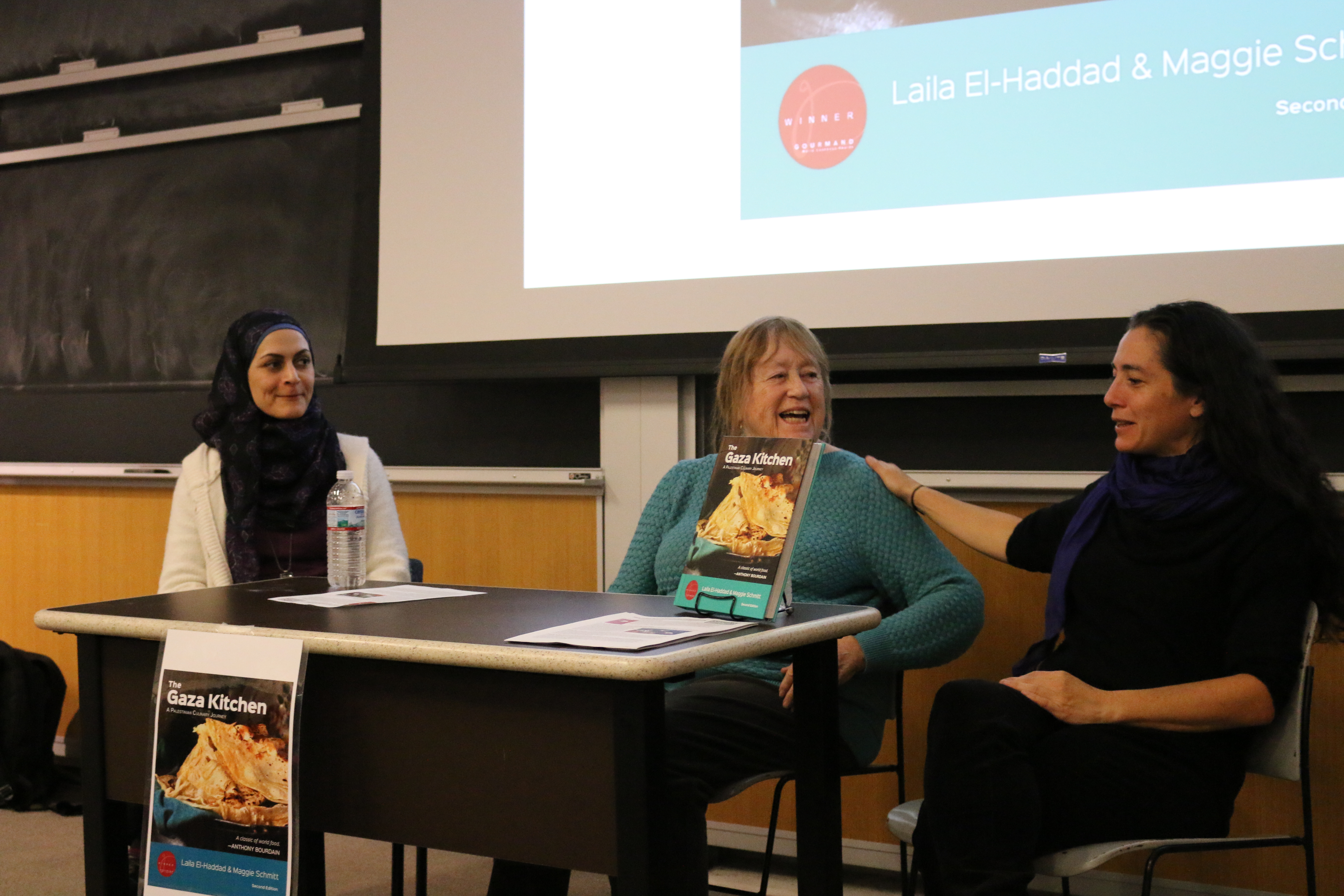
When I think of Gaza, I think of uncertainty. Those who live there expect the sounds of gunfire and explosions the way we expect to hear car horns. The last thing that comes to mind is the kind of food I might eat if I lived there. But for the people who live in Gaza, food is a comfort the same way it is for us. Laila and Maggie spoke of conflict and impossible living conditions. They said that parts of the area could be without power for hours or even days at a time. Maggie pointed out that it was hard enough for a mother to help her children with their homework and have dinner on the table under “normal” circumstances. But what about mothers in Gaza? At a time when life there is so tumultuous, Maggie and Laila were able to show how food is in many ways, the great unifier. That despite the uncertainties of daily life, people still take the time and gather to eat.
Cuisine in Gaza is based on what’s available. Like other places in the Middle East, that means lentils, cous cous, olive oil, chickpeas, lemon, and chili pepper among others. But at one point someone asked what the defining characteristic of Gazan food was. Laila immediately responded with the word, “heat.” She said that red chili pepper was in most of the food she associated with the region.
Laila also said that sour flavors are found in many dishes. Tamarind, sour plum, and pomegranate are used along with sumac to achieve what she called, “a gripping tartness.” These flavors combined with seasonings like za’atar, clove, cinnamon, sesame, dill, and garlic, aren’t exactly subtle. And while I know that heavily seasoned food isn’t uncommon in the regions surrounding Gaza, as I listened to Laila answer more questions, something occurred to me. The tone with which she spoke, her conviction, they were exactly like the ingredients she was talking about. These weren’t delicate, restrained flavors. They were purposeful, delightfully in your face. Certainly you don’t use clove, chili flakes, or sour plums without clear intention. They are statement-makers. And so was Laila. She and Maggie couldn’t have been better representatives for the kitchens of Gaza. Together they constituted a serious force.
They talked about the difficulties of obtaining traditional foods because of border closures, and how reliance on white flour and sugar were causing health problems associated with malnutrition among many citizens of Gaza. Maggie showed a photo of fisheries that were created as a result of limited access to the sea. They spoke of one-pot meals and a category of dishes Laila hesitantly allowed Maggie to refer to as “mush.” But after two hours of listening to their stories I was struck by what I really saw. Two mothers. Two very poised, confident women trying to tell the story of, quite possibly, the most unstable place in our world.
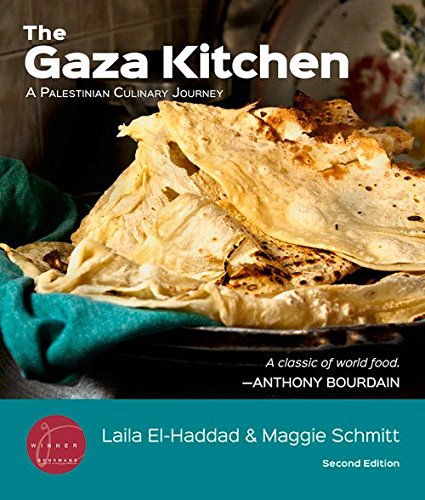
For hundreds of years tribes of people have converged upon this small region. This has given way to a culinary tradition created from necessity, trade, and war. But despite the constant state of unrest, Maggie and Laila were able to paint a clear picture of a Gazan people who were unwavering and incredibly proud of their culinary heritage.
-Written by Chelsie Lincoln, MLA Gastronomy Student
Thanksgiving with BU Gastronomy Students
We hope you had a great Turkey Day and spent lots of time reflecting on what you are grateful for! BU is off for the holiday and we were curious about how Gastronomy students spend Thanksgiving. Meet Michelle and Catherine who have shared their Thanksgiving traditions with us!

For Puerto Ricans, Thanksgiving, or the day of the turkey, is a very special holiday. It represents the start of our favorite time of the year, Christmas. All my life, on this special day, my family and I have gathered at my maternal grandparents house. My grandmother has always been responsible for preparing the turkey with a special filling of “mofongo” (mashed plantain) and ground beef, and to make rice with “gandules” (pigeon peas), which is our official symbol of festive food.
My aunt always brings boiled root vegetables and pieces of roasted pork (simply because a Puerto Rican party without pork is incomplete). While in my home we take care of the desserts, whether a good homemade carrot cake, a flan or a “tembleque”, which is custard made with coconut milk, cornstarch and cinnamon. In addition to that, at the table we will always find “pan criollo” (our traditional bread), potato salad with mayonnaise, “pasteles boricuas” (similar to Mexican tamales but based on plantains), “coquito” (a drink made whit coconut cream), and finally “ron caña” (a clandestine rum, illegal for not paying taxes and for not meeting the requirements of health and quality controls).
After chopping the turkey and serving all the plates, my grandparents, my uncles, my parents, my siblings and I stood around the outdoor dining table, and my grandfather lead a prayer of thanks. Once my grandfather finishes the prayer, we say to each other "buen provecho" (a typical phrase that is said before beginning to eat to desire a good digestion) and we run to enjoy the exquisite food that adorns the dishes. The evening is distinguished by the typical Christmas music of Puerto Rico, the loud jokes of my father and planning the parties for the rest of the Christmas.

This year is the first time I will celebrate Thanksgiving away from my warm home, but with my extended family.
My Puerto Ricans friends who live in Boston will come to my apartment and we will recreate the typical Puerto Rican Thanksgiving party that I described earlier. I'm sure the only difference will be the cold weather and the possibility of snow, but we will do our best to bring Puerto Rico to us and spend it as warm as if we were at home.
“¡Buen provecho y que empiece la fiesta!”
By Michelle Estades, First-Year MLA Gastronomy
It’s All About Pie
One of the key elements of any Thanksgiving meal, arguably the most important, is the dessert. Of course no Thanksgiving dessert spread could ever be complete without the perfect pumpkin pie, at least that is how my family feels. Beginning at a young age I began to help my father make the annual Thanksgiving pumpkin pie. I began to help more and more until, around the age of eleven or twelve, I had completely taken over the pumpkin pie making duties. At that point the only thing I did not do was actually cutting the pumpkins in half. I don’t know many twelve year olds who have the upper body strength to chop a pumpkin in two, so my dad continued to make that contribution for several years.
It is always vital that I make every bit of the pie from scratch, from the crust to the pumpkin puree for the filling. Absolutely no canned pumpkin in our house. What really turned the tables was the summer that our compost pile in the backyard began to sprout a mysterious vine. By the fall the vine was producing the most perfect pie pumpkins. Not only was our annual Thanksgiving pie made completely from scratch, it was also made from local, metro-Detroit pumpkins, grown in our very own backyard.
Backyard grown pumpkins are not the only element that I use to create our traditional pumpkin pie. The classic pumpkin spice, the correct balance of cinnamon, ginger, nutmeg, and cloves, isn’t even the most important part of the filling. It is all about the secret ingredient, dark rum. The rich, molasses-like flavor of the dark rum brings the whole pie together in a way that no other ingredient can. Over the years other members of the family have tried to make other things for dessert, like pumpkin cheesecake, or pecan pie, and it is never quite the same. It simply would not be a Santrock family Thanksgiving without a rum flavored pumpkin pie. We usually like to be a little adventurous with our Thanksgiving menu, this year we are replacing the turkey with lamb, some years we don’t even have mashed potatoes! As far as I’m concerned, we could have our entire meal be pumpkin pie and we would still be keeping to tradition.

By Catherine Santrock, First-Year MLA Gastronomy
Intro to Gastronomy: Student Papers
Finals are right around the corner and students from the Introduction to Gastronomy course are working on their final papers. We asked them: "What are you are writing about?" Here are some of their responses.
Here is a description of the Intro course from the BU Gastronomy webstite.
"This course is designed to introduce students to current and foundational issues in food studies and gastronomy. Through this focus on central topics, students will engage directly in the interdisciplinary method that is central to food studies. Each week will introduce a unique view of the holistic approach that is central to a liberal arts approach to studying food and a new research technique will be presented and put into practice through the readings and course exercises. This course will give Gastronomy students a better understanding of the field as a whole. While providing an overview and methodological toolbox, it will act as a springboard in to areas of specialization of the course. 4 cr."
Tasting the North End
Students from the Fall '16 Food History course explored the North End to do research for a group project on Sicily. Below are some snippets from their tour!
Entering the North End
Little Italy began in Boston's North End with its first Italian immigrants in the 1860s. The neighborhood's new residents sold fruits, cheeses, and other foodstuffs in the early migration. By 1930, The North End was a flourishing Italian community of 44,000.
Salumeria Italiana:
Salumeria Italiana has served the North End Community for over four decades. A variety of Italian imported grocery and deli items are available with prosciutto and balsamic vinegar among the best-selling items in the store. Check out their website! https://salumeriaitaliana.com/
The Daily Catch:
The Daily Catch is a Sicilian style seafood and pasta eatery established in 1973 by Paul Fedora, a North End native. Mr. Fedora began by selling calamari and other squid products at his 20 seat North End location on Hanover street. Offerings include Black Pastas, Calamari, and grilled Fish at their Brookline, Seaport and North End locations. Find out more at http://thedailycatch.com/.
Mike's Pastry:
Don't let the line intimidate you! Known for their delicious cannoli, Mike's Pastry draws a huge crowd. This family owned establishment on Hanover St. serves more than just jumbo sized cannoli with perfectly crisp shells, a variety of pastries, coffee, and gelato can also be purchased. http://www.mikespastry.com
Nature’s Past: Histories of Environment, & Society with Dr. James McCann
Gastronomy Students: If you are looking for an elective next semester, consider MET ML 589 Nature’s Past: Histories of Environment, & Society with Dr. James McCann. He has provided us with a brief description of the course.

I teach and think about connections between
our physical world, humans role in that and what they grow, eat,
and talk about eating. It tells us a lot about our world(s).
Environmental history has its methods defined by the parameters of science and the natural world –flora, fauna, topography, seasons—as well as human elements of technology, demography, and social organization. Cooking and cuisine is at the apex of these interactions. This course will examine the work of key historians in the emerging field of environmental history and the role of food/cooking in that human/nature interaction.


The course begins with historical/cultural landscapes and ends up in Boston’s landscape of food in bistros, food trucks, groceries, and storefront restaurants. It will include 3 group sessions in that will focus on particular dishes from Africa, the American South, and Italy as examples of the movement of ingredients, ideas, and techniques. The goal is to explore ingredients and the ecologies of cuisine. There seems to be a growing local, and global fascination with the world of food and how ideas in our world of what we eat, and cook, merge and diverge. Wonderful stuff about who we are.

All photos provided by Dr. McCann

James C. McCann
Professor of History
Associate Director for Development, African Studies Center
Faculty Fellow, Pardee Center for the Study of the Longer Range Future
Boston University
Treat Yourself for Halloween
There are a lot of great events going on in Boston this Halloween weekend. Here are a few that Gastronomy students might enjoy:
The Rise

Soooo many pumpkins! Over 5,000 hand carved pumpkins will be displayed at Boston's Seaport Hotel and World Trade center this weekend (Oct 27- Oct 30). Can you imagine all of the pumpkin pies and roasted pepitas made from the innards? Click the link above to check tickets and times.
Rosebud Kitchen

Get a candy treat topped milkshake from this Davis Sq. gem this Halloween. You can even trick it out with a shot of Evan Williams Bourbon! Get more details at bostonchefs.com
The Dinner Detective Murder Mystery Dinner Show
[youtube https://www.youtube.com/watch?v=Qff9sFLK8g0&w=560&h=315]
A real Whodunit? Solve the murder mystery this Halloween with the Dinner Detective. This interactive dinner show will have you playing Sherlock Holmes while you fill your belly! For tickets and private shows at the link above.
Boston Chocolate Tours

It's like trick or treat or adults! Take a chocolate tour through Back Bay or quench that Cupcake craving with a crawl before the evening festivities begin. These tours are held seasonally every Saturday.
Dining in the Dark

Dine in the dark at the Hampshire House in Boston. This 100-year-old Victorian townhome is the perfect setting for a spooky blindfolded dinner! Built in 1910, the Hampshire House has accommodated Bostonians for generations; it HAS to be haunted right? Click the link for tickets!
Fall 2016 Pépin Lecture Series in Food Studies and Gastronomy
The following programs are part of the Pépin Lecture Series in Food Studies and Gastronomy and are free and open to the public. To register, please call 617-353-9852 or visit www.bu.edu/foodandwine.
In the Matter of Food: Jewish Peddling in the New World, with Hasia Diner
Monday, September 26, 6:00 p.m. | Meets at 725 Commonwealth Avenue, Room 224.
The age of the great Jewish migration saw millions of European, Ottoman, and North African Jews leave their old homes to make new ones in new lands. Scores of men took their first steps in unfamiliar places as peddlers, selling house-to-house in non-Jewish communities. As they slept in  these new customers’ homes, it was largely through food that they negotiated their Jewish commitments and engagements with those unfamiliar with their culture. Learn more in this lecture from Hasia Diner, who is a New York University professor of Hebrew and Judaic studies and history; Paul S. and Sylvia Steinberg Professor of American Jewish History; and director of the Goldstein-Goren Center for American Jewish History.
these new customers’ homes, it was largely through food that they negotiated their Jewish commitments and engagements with those unfamiliar with their culture. Learn more in this lecture from Hasia Diner, who is a New York University professor of Hebrew and Judaic studies and history; Paul S. and Sylvia Steinberg Professor of American Jewish History; and director of the Goldstein-Goren Center for American Jewish History.
Photo Credit: Peddler with cart, c. 1896. Photograph by Elizabeth Austen. Library of Congress.
The French Chef in America: Julia Child, with Alex Prud’homme
Sunday, October 16, 11:00 am. | Meets at 808 Commonwealth Avenue, Room 117.
 The enchanting story of Julia Child's years as TV personality and beloved cookbook author--a sequel in spirit to My Life in France--by her great-nephew. Julia Child is synonymous with French cooking, but her legacy runs much deeper. Now, her great-nephew and My Life in France coauthor vividly recounts the myriad ways in which she profoundly shaped how we eat today. He shows us Child in the aftermath of the publication of Mastering the Art of French Cooking, suddenly finding herself America's first lady of French food and under considerable pressure to embrace her new mantle. We see her dealing with difficult colleagues and the challenges of fame,
The enchanting story of Julia Child's years as TV personality and beloved cookbook author--a sequel in spirit to My Life in France--by her great-nephew. Julia Child is synonymous with French cooking, but her legacy runs much deeper. Now, her great-nephew and My Life in France coauthor vividly recounts the myriad ways in which she profoundly shaped how we eat today. He shows us Child in the aftermath of the publication of Mastering the Art of French Cooking, suddenly finding herself America's first lady of French food and under considerable pressure to embrace her new mantle. We see her dealing with difficult colleagues and the challenges of fame,  ultimately using her newfound celebrity to create what would become a totally new type of food television. Every bit as entertaining, inspiring, and delectable as My Life in France, The French Chef in America uncovers Julia Child beyond her "French chef" persona and reveals her second act to have been as groundbreaking and adventurous as her first.
ultimately using her newfound celebrity to create what would become a totally new type of food television. Every bit as entertaining, inspiring, and delectable as My Life in France, The French Chef in America uncovers Julia Child beyond her "French chef" persona and reveals her second act to have been as groundbreaking and adventurous as her first.
Photo Credit: Prud’homme, A. 2016, The French Chef in America, Alfred A. Knopf & Pantheon, New York.
Changing Foodways in Maputo Mozambique, with Lilly Havstad
Tuesday, October 18, 6:00 p.m. | Meets at 725 Commonwealth Avenue, Room 313.
 Photo Credit: FUNGAI TICHAWANGANA, http://www.bu.edu/research/articles/mozambique/
Photo Credit: FUNGAI TICHAWANGANA, http://www.bu.edu/research/articles/mozambique/
Join Lilly Havstad, a doctoral candidate in the Department of History at Boston University, for stories and reflections based on her doctoral research into changing foodways and the emergence of an African middle class in Maputo, the capital city of Mozambique. She will discuss how changing urban foodways have been enmeshed and emergent in the process of urbanization over time, how foodways center the lives of women as primary cooks and caretakers in Mozambican society, and how the lens of food reveals the cultural and social dynamics of urban class formation.
The Gaza Kitchen: A Palestinian Culinary Journey, with Laila El-Haddad and Maggie Schmitt and introduction by Nancy Harmon Jenkins
Tuesday, November 15, 6:00 p.m. | Meets at 725 Commonwealth Avenue, Room 224.
Photo Credit: www.gazakitchen.com
Laila El-Haddad and Maggie Schmitt will describe the process by which they developed and conducted field research for their innovative ethnographic cookbook, The Gaza Kitchen: A Palestinian Culinary Journey. Focusing on the little-known but distinctive cuisine of Palestine’s Gaza region, their book showcases over 140 never-before transcribed recipes of home cooks (mainly women), as well as the vital narratives of Gazan farmers, merchants, and food security experts. This interdisciplinary project—embraced by culinary figures such as Anthony Bourdain, Claudia Roden, and Yotam Ottolenghi—addresses food sovereignty and sustainability issues facing the Palestinian people.





